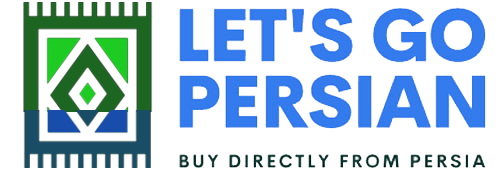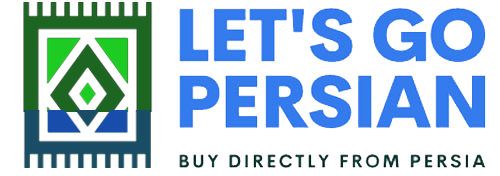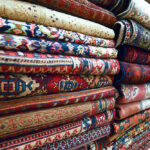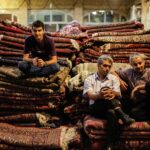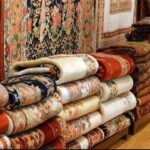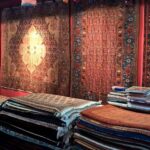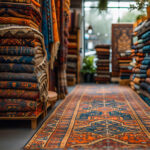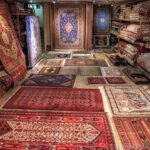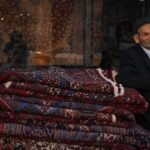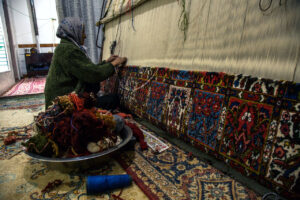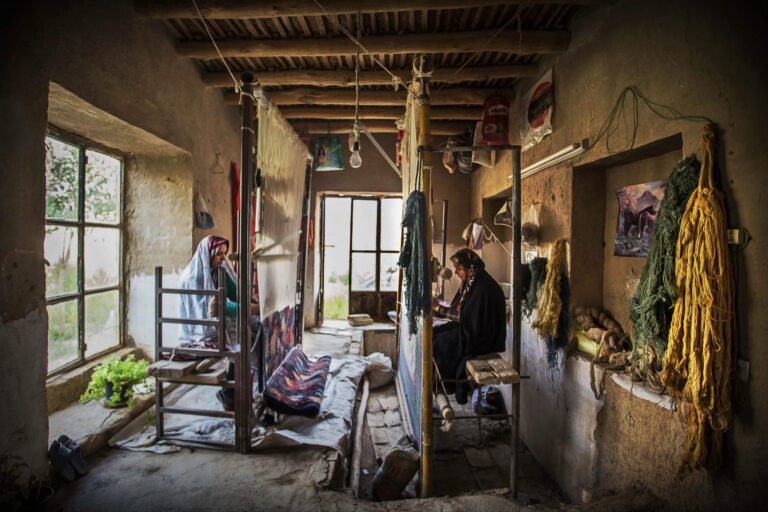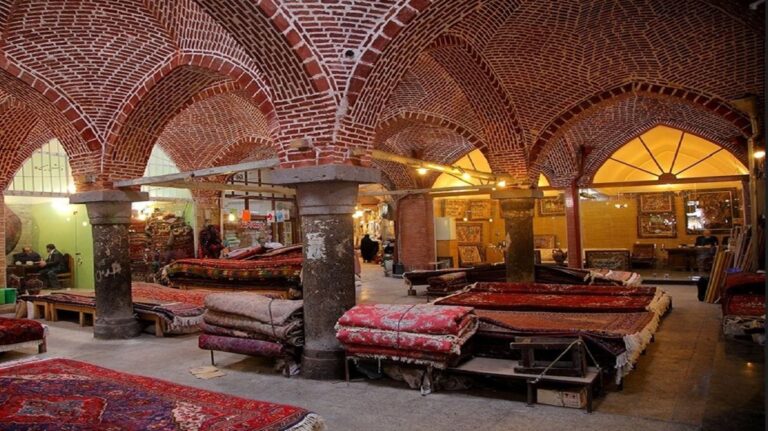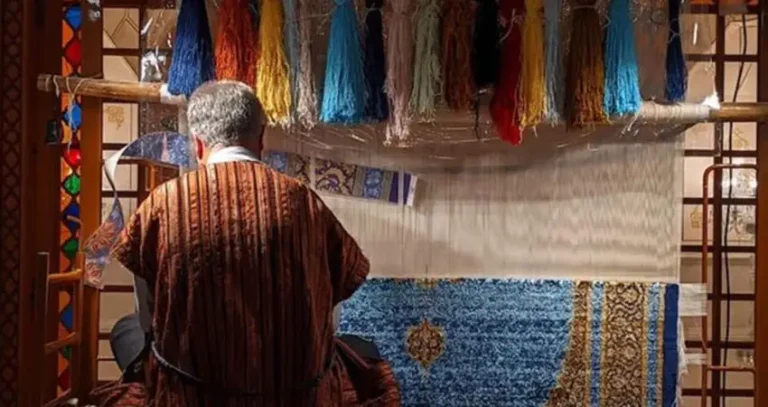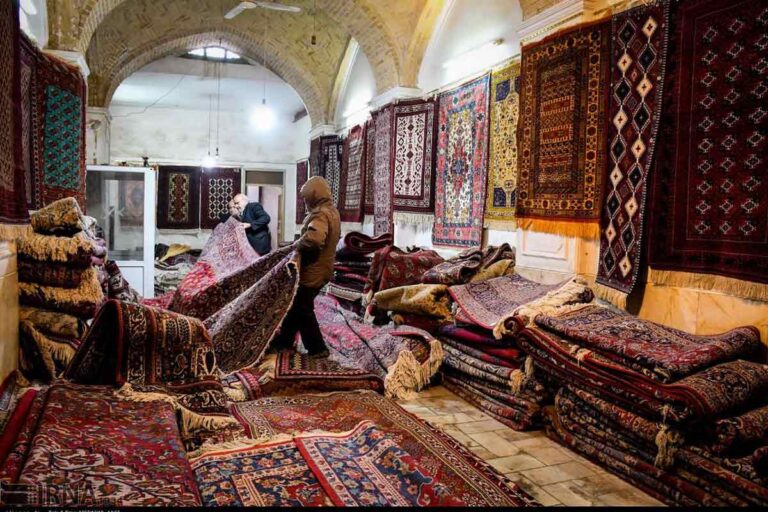Regional Motifs and Symbolism of Persian Carpet
Market Value and Rarity of Persian Carpet
Adapting Regional Patterns in Contemporary Persian Rugs
The art of Persian rug-making is steeped in tradition, with patterns and motifs passed down through generations. Today, contemporary designers are reimagining these timeless designs—transforming classic regional patterns into fresh, modern expressions that resonate with today’s aesthetics. In this expanded post, we explore how modern interpretations both preserve and transform traditional motifs, drawing on examples from a wide array of rug centers, including Tabriz, Kashan, Qom, Isfahan, Sanandaj, Nain, Kerman, Ardabil, Qazvin, Shiraz, Yazd, Bijar, Mashhad, Zanjan, Hamadan, and Gorgan.
Bridging Heritage and Innovation
Respecting the Past
Traditional Persian rugs embody centuries of artistry. Every knot, floral curve, and geometric line tells a story—whether it’s the intricate calligraphy of Qom or the bold medallions of Isfahan. These designs are deeply rooted in regional histories and cultural symbolism, passed down by master weavers.
Embracing Change
Contemporary designers honor this legacy while experimenting with scale, color, and materials. They re-scale motifs for a modern context, simplify ornate details, and even fuse patterns from different regions. The result is a dynamic fusion that both preserves cultural narratives and meets modern design sensibilities.
Modern Design Innovations Across Persian Rug Centers
Tabriz: Geometric Precision with a Contemporary Twist
-
Traditional Style: Tabriz rugs are known for their striking geometric patterns and symmetrical layouts, reflecting the city’s rich history as a cultural crossroads.
-
Modern Adaptation: Modern Tabriz-inspired designs often incorporate lighter, varied color palettes and abstract forms. Designers simplify intricate details to create bold, statement pieces that work well in minimalist or contemporary interiors.
Kashan: The Elegance of Floral Motifs Reimagined
-
Traditional Style: Kashan rugs traditionally feature delicate, intricate floral patterns inspired by the city’s famous gardens.
-
Modern Adaptation: Contemporary Kashan designs retain the graceful floral language but often use simplified outlines and modern color gradients. The result is a softer, more abstract interpretation that blends traditional beauty with a sleek, modern feel.
Qom: Sacred Geometry Meets Abstraction
-
Traditional Style: Qom rugs are revered for their meditative, sacred geometries and intricate calligraphic details.
-
Modern Adaptation: Today’s Qom-inspired rugs abstract these elements—transforming precise, repetitive patterns into fluid, interpretative designs. This creates a visual meditation that feels both spiritual and avant-garde.
Isfahan: Imperial Splendor in a Modern Light
-
Traditional Style: Isfahan rugs are known for their lavish medallions, ornate borders, and multi-layered designs that echo the grandeur of Persian imperial courts.
-
Modern Adaptation: Contemporary designers infuse Isfahan motifs with asymmetry and negative space, creating designs that maintain historical opulence while embracing modern simplicity. The interplay between rich tradition and minimalist design offers a fresh perspective on classic patterns.
Sanandaj: Bold Folk Narratives Revitalized
-
Traditional Style: Sanandaj rugs express vibrant, bold patterns rooted in Kurdish folklore and cultural storytelling.
-
Modern Adaptation: Modern interpretations amplify these narratives with brighter color contrasts and dynamic, expressive forms. The result is a piece that honors the rustic spirit of Sanandaj while appealing to contemporary art lovers.
Nain: Minimalism and Refined Simplicity
-
Traditional Style: Nain rugs are celebrated for their understated elegance, characterized by minimalist geometric patterns and subtle color schemes.
-
Modern Adaptation: Designers are reimagining Nain’s refined motifs with even cleaner lines and a more monochromatic approach, perfect for modern, understated interiors that favor simplicity and balance.
Kerman: Eclectic Narratives with a Modern Edge
-
Traditional Style: Kerman rugs often feature rich, complex pictorial scenes interwoven with floral elements and medallions, reflecting the region’s exposure to various cultural influences.
-
Modern Adaptation: Contemporary Kerman designs tend to highlight these eclectic narratives by isolating key motifs and using bold, unexpected color blocks to create visual impact while maintaining the region’s storytelling heritage.
Ardabil and Qazvin: Timeless Heritage Meets Modern Innovation
-
Traditional Style: Ardabil and Qazvin rugs are noted for their timeless designs—deeply rooted in history with meticulous craftsmanship and intricate detailing.
-
Modern Adaptation: Modern reinterpretations from these centers often fuse traditional motifs with contemporary design elements, such as simplified patterns, open spaces, and modern textures. These adaptations keep the historic essence while offering fresh, current interpretations.
Shiraz and Yazd: Poetic Expressions in Contemporary Form
-
Traditional Style: Shiraz rugs traditionally combine dramatic floral and geometric elements that capture the poetic spirit of Persian art, while Yazd rugs echo the stark beauty of desert landscapes with their subdued, earthy palettes.
-
Modern Adaptation: Contemporary designs from Shiraz and Yazd experiment with scale and abstraction, merging bold poetic strokes with minimalist aesthetics. The resulting designs are both evocative and versatile, suited for modern living spaces.
Bijar, Mashhad, and Zanjan: Rugged Traditions Reinvented
-
Traditional Style: Bijar rugs are known for their durability and robust patterns, while Mashhad and Zanjan offer designs steeped in spiritual symbolism and historical simplicity.
-
Modern Adaptation: Modern versions from these regions reinterpret traditional motifs with cleaner lines and more efficient patterns. The modern approach retains the cultural narrative while appealing to consumers who appreciate durability paired with modern design sensibilities.
Hamadan and Gorgan: Regional Voices in Contemporary Design
-
Traditional Style: Hamadan and Gorgan have their own distinct regional designs, with Hamadan reflecting rustic, earthy motifs and Gorgan showcasing organic, nature-inspired patterns.
-
Modern Adaptation: Contemporary designers from these areas draw on their local heritage to produce works that are both grounded in tradition and innovatively modern. They integrate natural color palettes with abstracted forms, offering a fresh take on local artistry.
Embracing the Future While Honoring the Past
The evolution of Persian rug design is a testament to the enduring nature of traditional art and its capacity to adapt. Modern interpretations expand on classic techniques—by reimagining traditional patterns, experimenting with new materials, and incorporating digital design methods, today’s designers ensure that the legacy of Persian rug-making remains vibrant and relevant.
Whether you are captivated by the intricate geometric precision of Tabriz, the floral elegance of Kashan, or the spiritual abstraction of Qom, each modern Persian rug is a living canvas that bridges the gap between history and contemporary design. These innovative adaptations celebrate a rich heritage while inviting a new generation to experience the timeless beauty of Persian artistry.
Embrace this dynamic dialogue between past and present, and discover how modern interpretations of traditional Persian rug designs continue to captivate and inspire, weaving new narratives into an ancient art form.
